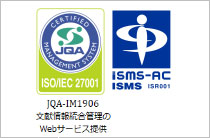ホームIMICライブラリMMWR抄訳2016年(Vol.65)水痘ワクチンの2回予防接種プログラムにおける水痘の・・・
2016/09/02Vol. 65 / No. 34
MMWR65(34):902-905
Epidemiology of Varicella During the 2-Dose Varicella Vaccination Program — United States, 2005–2014
水痘ワクチンの2回予防接種プログラムにおける水痘の疫学 ― アメリカ、2005年~2014年
水痘ワクチン導入前、アメリカでの水痘患者は約400万人と推定され、毎年11,000~13,500例が入院し、100~150例が死亡していた。水痘ワクチンは1966年より1回接種が小児の定期接種プログラムとして実施され、発症率は約90%低下したが、アウトブレイクが継続して発生することから2006年より2回接種(12~15カ月齢、4~6歳)が実施されている。今回、National Notifiable Diseases Surveillance Systemデータより、2回接種プログラム実施後の水痘の発症率について分析が行われた。2005~2006年(2回接種実施前)と2013~2014年(2回接種実施後)における水痘の発症率はそれぞれ人口10万人あたり25.4、3.9と84.6%低下し(p<0.001)、年齢別では5~9歳:89.3%、10~14歳:84.8%にて大きく低下していた。また、ワクチン接種プログラム導入前、毎年水痘患者を報告していた4州(イリノイ、ミシガン、テキサスおよびウエストバージニア)では、1993~1995年から2013~2014年にて97.4%(92.9~97.9%)の低下であった。2013~2014年の水痘患者におけるワクチン接種状況については12,784例にて明らかであり、7,000例(54.8%)が少なくとも1回接種を受けていた。回数に関しては2,266例にて判明、921例(39.0%)が1回、1,331例(56.4%)が2回、14例(0.6%)が3回接種を受けていた。入院状況に関しては3,715例にて明らかであり、81例(2.2%)が入院し、うちワクチン接種に関しては8例が1回、5例が2回接種を受けていた。また、皮膚病変を認める8,358例のうち、軽症例は4,269例(51.1%)であり、ワクチン接種例は非接種例に比べ軽症例が有意に多く認められた(76.8% vs 23.2%)。以上、水痘ワクチンの2回接種プログラムにより、接種対象となった5~15歳にて発症率の大きな低下が認められた。
References
- Guris D, Jumaan AO, Mascola L, et al. Changing varicella epidemiology in active surveillance sites—United States, 1995–2005. J Infect Dis 2008;197(Suppl 2):S71–5. <http://dx.doi.org/10.1086/522156>
- Marin M, Güris D, Chaves SS, Schmid S, Seward JF; Advisory Committee on Immunization Practices. Prevention of varicella: recommendations of the Advisory Committee on Immunization Practices (ACIP). MMWR Recomm Rep 2007;56(No. RR-4).
- Bialek SR, Perella D, Zhang J, et al. Impact of a routine two-dose varicella vaccination program on varicella epidemiology. Pediatrics 2013;132:e1134–40. <http://dx.doi.org/10.1542/peds.2013-0863>
- Daly ER, Anderson L, Dreisig J, Dionne-Odom J. Decrease in varicella incidence after implementation of the 2-dose recommendation for varicella vaccine in New Hampshire. Pediatr Infect Dis J 2013;32:981–3. <http://dx.doi.org/10.1097/INF.0b013e318293308e>
- Sosa LE, Hadler JL. Epidemiology of varicella in Connecticut, 2001–2005. J Infect Dis 2008;197(Suppl 2):S90–3. <http://dx.doi.org/10.1086/522128>
- Mullins J, Kudish K, Sosa L, Hadler J. Continuing decline in varicella incidence after the 2-Dose Vaccination Recommendation—Connecticut, 2009–2014. Open Forum Infect Dis 2015;2:ofv150. <http://dx.doi.org/10.1093/ofid/ofv150>
- CDC. Evolution of varicella surveillance—selected states, 2000–2010. MMWR Morb Mortal Wkly Rep 2012;61:609–12.
- Leung J, Lopez AS, Blostein J, et al. Impact of the US two-dose varicella vaccination program on the epidemiology of varicella outbreaks: data from nine states, 2005–2012. Pediatr Infect Dis J 2015;34:1105–9. <http://dx.doi.org/10.1097/INF.0000000000000821>
- Leung J, Harpaz R. Impact of the maturing varicella vaccination program on varicella and related outcomes in the United States: 1994–2012. J Pediatric Infect Dis Soc 2015;piv044 Epub August 12, 2016. <http://dx.doi.org/10.1093/jpids/piv044>
- Leung J, Bialek SR, Marin M. Trends in varicella mortality in the United States: Data from vital statistics and the national surveillance system. Hum Vaccin Immunother 2015;11:662–8. <http://dx.doi.org/10.1080/21645515.2015.1008880>
Copyright © 2013 International Medical Information Center. All Rights Reserved.












